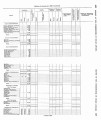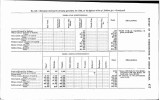| Title |
Annual Report of the Commissioner of Indian Affairs - 1869 |
| Subject |
Federal government; Indians of North America; Indian Reservations Utah; White people--Relations with Indians; Indigenous peoples--North America |
| Keywords |
Indian; White Relations; Native Americans |
| Publisher |
Digitized by J. Willard Marriott Library, University of Utah |
| Tribe |
Ute; Shoshoni; Shoshone; Goshute; Paiute; Navajo |
| Language |
eng |
| Description |
Excerpts concerning Utah from the Annual Report of the Commissioner of Indian Affairs - Courtesy of the University of Wisconsin Digital Collections. |
| Type |
Image/StillImage |
| Format |
application/pdf |
| Rights |
Digital Image © 2011 America West Center. All Rights Reserved. |
| ARK |
ark:/87278/s6gn140f |
| Creator |
Commissioner of Indian Affairs |
| Date |
1869 |
| Spatial Coverage |
Utah; Washington (D.C.) |
| Setname |
uaida_main |
| ID |
368837 |
| Reference URL |
https://collections.lib.utah.edu/ark:/87278/s6gn140f |



























































